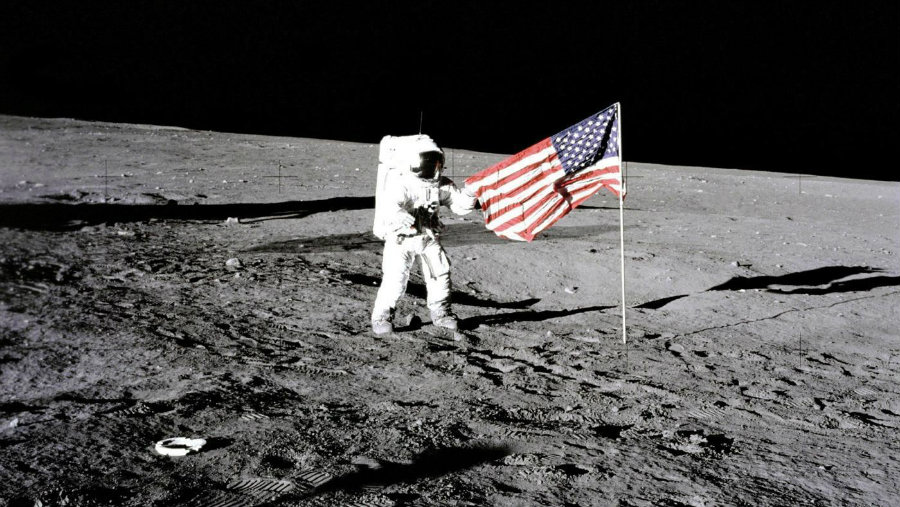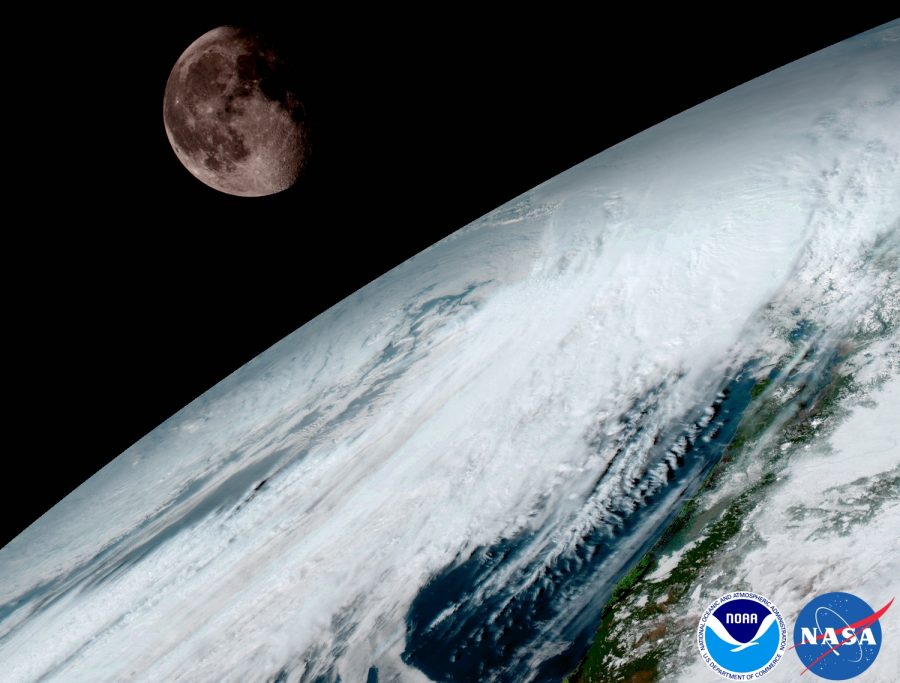After it was revealed that President Trump’s transition team asked NASA about mining the Moon for resources, the convergence of U.S.-borne space efforts shows that the current administration is aiming toward having a greater commercial presence in outer space.
Furthermore, among the budget cuts planned out for 2018, environmental agencies were hit severely while NASA’s budget was spared of drastic measures, only reducing its $19.3 billion budget by $200 million. According to documents obtained through a Freedom of Information request and uploaded by Motherboard, it appears that Trump is looking at NASA’s potential to bring significant profits to the country by exploiting space resources.

Trump aims for the Moon
Trump’s advisers on space affairs asked NASA officials about the possibility of developing technology for commercial use, more specifically, planning to survey the Moon for extracting resources shortly.
One of the queries prompts the agency to “provide data and examples of how NASA does technology development (perhaps even in the form of products) when working with industry—for instance, types of contracts/partnerships and intellectual property arrangements.”

This was responded with:”As research and technology efforts mature, appropriate technologies are transferred to industry and commercialized through multiple programs and approaches to benefit a broad range of users ensuring the nation realizes the full economic value and societal benefit of these innovations.”
The idea is to have NASA lead international and commercial allies in the exploration and exploitation of deep space, while low Earth orbit is held as a hub for commercial activity.
Currently, NASA researchers suggest that in the Moon’s south pole there may be water, hydrogen, and methane that could be easily mined and used by lunar mining efforts, being labeled as a “critical long-term resource” for future missions.
The first steps would be to survey the depth and extent of “operationally useful” deposits. One of the projects to achieve this is the Resource Prospector mission, a rover designed to excavate the previously mentioned compounds.
The rover would be the spiritual successor of the Lunar Crater Observation and Sensing Satellite (LCROSS) and the Lunar Reconnaissance Orbiter (LRO), which helped confirm the existence of water on the lunar surface. The prospector would mine the available resources.
The Moon could be a station for space travelers
To mine the Moon efficiently, it is necessary to use the resources that are readily available at place of excavation. NASA argues that humans living and working in other planetary bodies must be able to obtain their own air and water to thrive on.
If approved, the Resource Prospector mission would launch in the 2020s, arriving at the lunar surface after three days. Upon arrival, it will deploy its rover which will roam the lunar surface, looking for water, hydrogen, and other resources. If one of these compounds is found, it will drill out samples and heat them up to assess the quantity and quality of the acquired elements.

Additionally, there are private startups, such as Moon Express which are looking toward the commercialization of space affairs. Moon Express became the first company approved by the U.S. to travel beyond Earth’s orbit and carry out a mission to place a rover on the moon before the year ends. Researchers assure that the value of the resources available on the Moon adds up to trillions of dollars, which increases its potential for becoming a station for interplanetary exploration.
Approving Moon Express was as much as a leap for the government as for private companies altogether. It is also one of the leaders in Google’s Lunar XPRIZE competition, which challenges contestants to put a commercial spacecraft on the Moon and have it travel 500 meters across its surface, while also sending high-definition images and video down to Earth.
The mission is also expected to install a “mooncam,” which should be accessible through the internet to see the lunar surface. Google intends on providing access to the camera through YouTube, allowing anyone to see what’s going on in the Moon in real time.
The Moon Express mission is expected to cost much less than the NASA Apollo missions, as the rocket launch will cost less than $5 million, not taking into account additional costs on cargo and operation.
On the other hand, all efforts seem to go against the 197 Outer Space Treaty, signed by the U.S., the Soviet Union, and other countries, which reads:
“The exploration and use of outer space, including the Moon and other celestial bodies, shall be carried out for the benefit and in the interests of all countries, irrespective of their degree of economic or scientific development, and shall be the province of all mankind.”
Source: Motherboard

Well written article, but we feel that the final assertion needs some clarification. The excerpt cited is only the first of several paragraphs making up the 1st Article of the Outer Space Treaty. The 2nd paragraph states:
“Outer space, including the Moon and other celestial bodies, shall be free for
exploration and use by all States without discrimination of any kind, on a basis of
equality and in accordance with international law, and there shall be free access to
all areas of celestial bodies.”
The dominant interpretation by international institutions of space law is that the use of space resources, obtained peacefully and without appropriation of territory, does not contravene the Outer Space Treaty (OST).
The United States explicitly embraced the legal rights of the private sector to space resources under the terms of the OST through the enactment of the Space Resource Exploration and Utilization Act, signed into law by President Obama in November 2015.